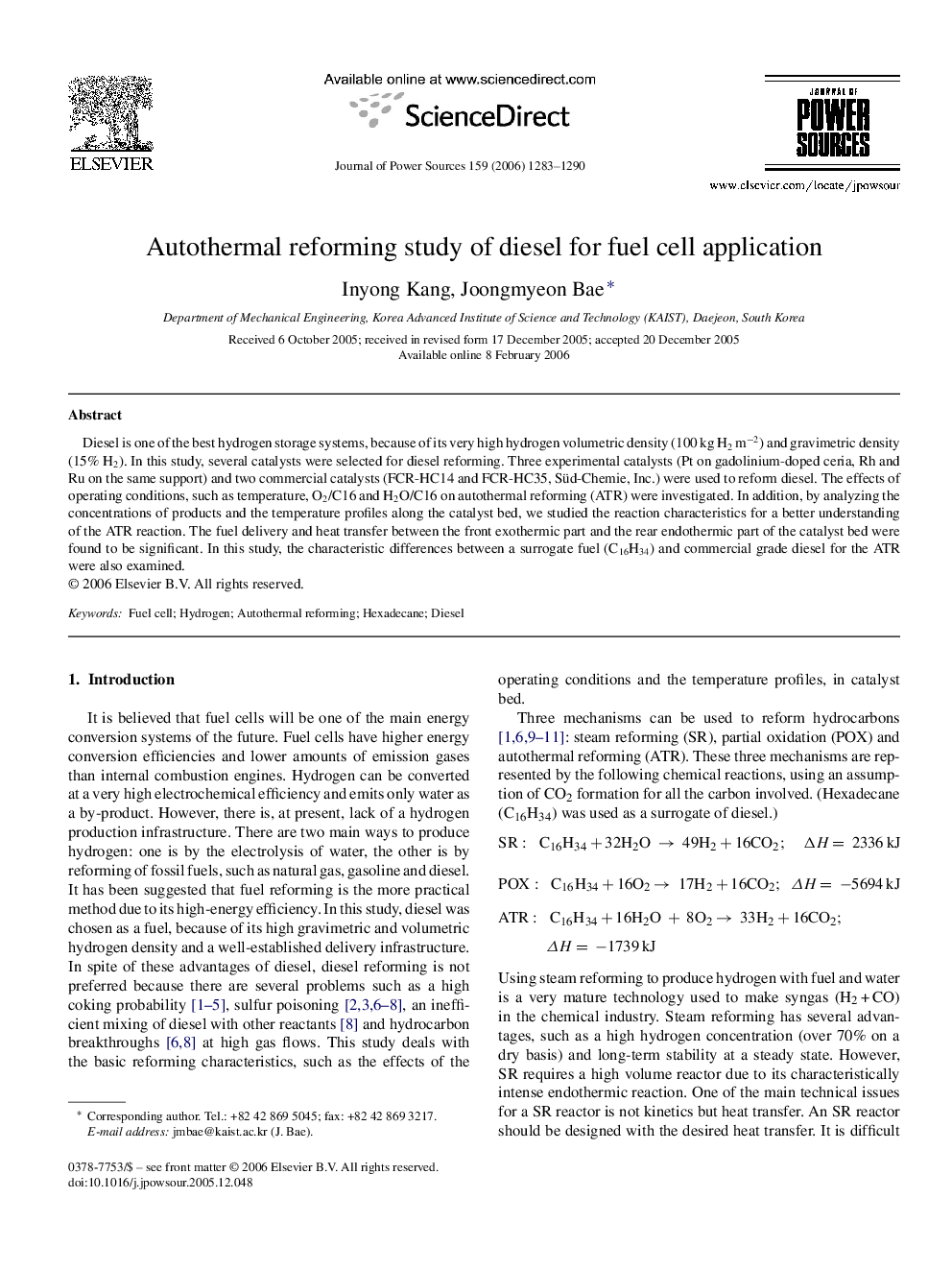| Article ID | Journal | Published Year | Pages | File Type |
|---|---|---|---|---|
| 1287285 | Journal of Power Sources | 2006 | 8 Pages |
Diesel is one of the best hydrogen storage systems, because of its very high hydrogen volumetric density (100 kg H2 m−2) and gravimetric density (15% H2). In this study, several catalysts were selected for diesel reforming. Three experimental catalysts (Pt on gadolinium-doped ceria, Rh and Ru on the same support) and two commercial catalysts (FCR-HC14 and FCR-HC35, Süd-Chemie, Inc.) were used to reform diesel. The effects of operating conditions, such as temperature, O2/C16 and H2O/C16 on autothermal reforming (ATR) were investigated. In addition, by analyzing the concentrations of products and the temperature profiles along the catalyst bed, we studied the reaction characteristics for a better understanding of the ATR reaction. The fuel delivery and heat transfer between the front exothermic part and the rear endothermic part of the catalyst bed were found to be significant. In this study, the characteristic differences between a surrogate fuel (C16H34) and commercial grade diesel for the ATR were also examined.
